Helminthiasis is a parasitic disease that is especially common in children. If worms are present in a certain organ or system of the child's body, their negative effects can affect not only its function, but also the work of the immune and nervous systems. Symptoms such as cough, loss of appetite, indigestion, allergic reactions may be accompanied by other unrelated symptoms. If you suspect a worm infestation, be sure to contact a specialist immediately rather than self-medicating.

Why are worms dangerous?
Most of the helminthiasis common in children reside in the gut. They live and eat in it, so they multiply and release toxins. Parasites also mechanically affect the intestinal wall. The consequences of worms being active in children can be:
- Vitamin deficiency and weight loss. These problems arise due to lack of nutrients and vitamins. As a result, the child begins to lag behind. Pathological processes can start in other organs.
- Intestinal inflammation, colitis, dysbiosis, bleeding. All of these unpleasant and serious complications are caused by the mechanical damage the worms cause in children.
- The development of inflammatory processes in the appendix, liver, gallbladder. These are the organs adjacent to the gut that parasites can enter.
- intestinal obstruction. It can be partial or complete, and sometimes there is a risk of rupture of the bowel wall.
- Body poisoning. As the worms live and die in the human body, they release aggressive toxins.
- allergy. The waste products of parasites are considered strong allergens.
- Violation of liver function. For this reason, children must follow the diet for many years and consume extra enzymes.
- mental illness. Worms tend to negatively affect a patient's nervous system.
Types of worms that affect children's bodies
A variety of parasites can appear in children. They vary in size, from small to large, and in different ways of expressing themselves, with varying incubation periods, ranging from 1 to 1. 5 months. In order to prescribe an effective medication that helps cure worms, you need to correctly identify the type. The most common types in children are:
- adhesive tape. This type of worm includes tapeworms, dwarf tapeworms, tapeworms, and echinococcosis.
- Ring. These include annelids.
- round. Their representatives are Trichinella, pinworms, whipworms, nematodes, roundworms.
- dizzy. They are represented by scrapers.
- flat. These include flukes and flukes.
Causes and methods of infection
Not only is it possible to get worms in a foreign country or try unusual dishes on the menu. Playing in the sandbox and unwashed hands is the easiest way for worms to get into a child's body. Toddlers tend to touch and study everything without regard for the purity of the subject being studied. Afterwards, they can safely lick their fingers without washing first. Worms remain alive for long periods of time (weeks to months), resting on the surfaces of various objects.
In addition to dirty hands, the main sources of infection include:
- dirty toys and surfaces;
- clothing;
- shoe;
- railings at the entrance;
- door handle;
- unboiled water;
- dirty vegetables and fruits;
- soil, dirt, sand;
- contact with sick children;
- The meat is not cooked well enough;
- Unheated fish or other seafood.
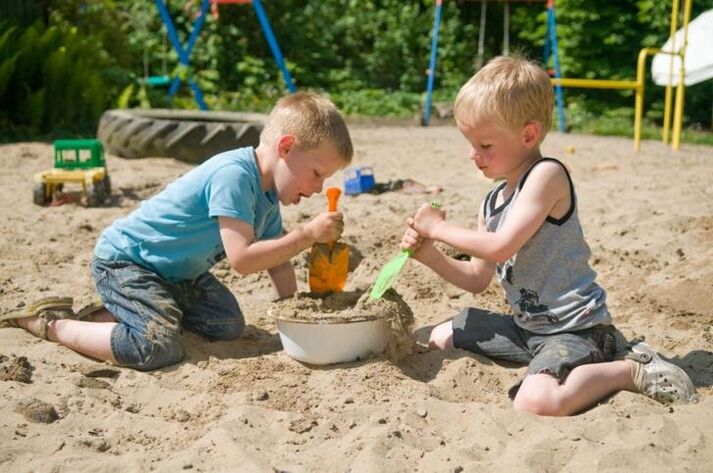
Symptoms of parasites in children
Usually in children under 1 year of age, any manifestation of parasites in the body is observed in individual cases. In children attending kindergarten or other developing tissues, the first symptoms indicative of helminth infection are recorded as early as older age (about 2-3 years).
There are many types of helminthiasis in children, and each type has its own specific characteristics. However, any type of worm has many symptoms:
- irritability and moodiness for no reason;
- restless sleep;
- allergy;
- anal itching;
- increased saliva secretion;
- Indigestion with diarrhea, constipation, nausea and bloating;
- loss of appetite;
- lose weight with good nutrition;
- Pale skin.
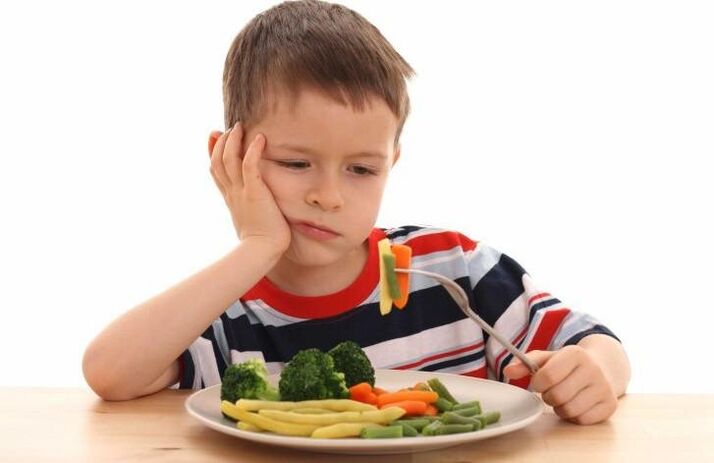
In adult children, these symptoms may include:
- Headache;
- upset stomach;
- Dizziness;
- increased fatigue;
- Loss of concentration.
Enterobiasis (pinworm)
When parasites such as pinworms enter a child's body, a disease called pinworm disease. This type of worm is the most common in preschool children - from 2 to 5 years old. They vary in size from 5-13 mm in medium and are the least harmful compared to other types of parasites.
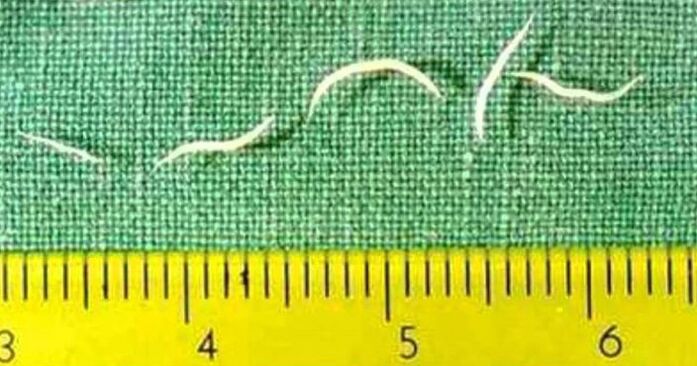
Their presence can cause the following symptoms:
- Severe itching in the anus. It can be so intense that the child won't sleep well, scratching the anus, causing irritation and inflammation.
- Urinary incontinence during nighttime sleep. See girls. This can happen if anal pinworms enter the urethra. As a result, the baby begins to develop urethritis, vaginitis, or cystitis.
Pinworms are easy to get rid of and are not as dangerous as other types of worms. When the first signs appear, it is important to consult a doctor promptly and pass the necessary tests. If pinworms are found in a child, the parents also need treatment. All clothing, towels, and other rags should be washed and ironed, and rooms cleaned thoroughly, as the eggs of these worms are found on all surfaces in an infected person's home.
Ascariasis (roundworms)
The second most common among children are large-sized roundworms, up to 40 cm in size, that live in the small intestine - roundworms. In addition to the general symptoms of helminthiasis, in the case of roundworms, the infected person develops an unreasonable cough in the initial stage without any inflammatory process in the respiratory tract. It occurs when the larvae of the parasite enter the lungs and upper respiratory tract and re-enter the stomach by coughing.
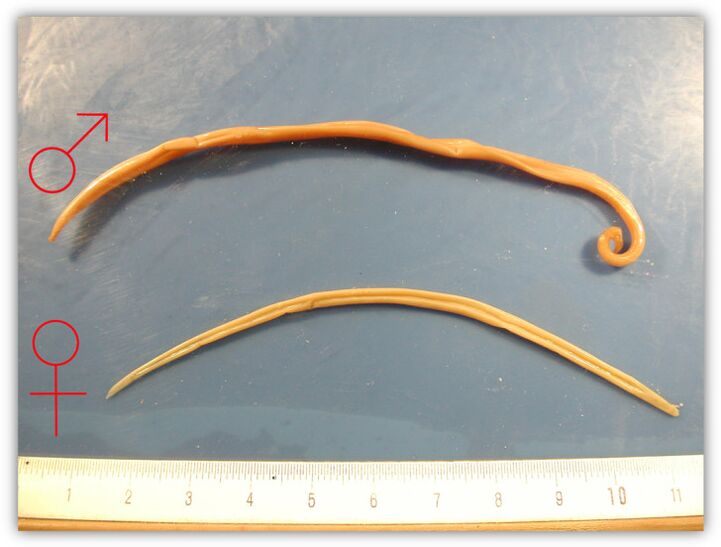
Other features include:
- headache and dizziness;
- allergy;
- swollen lymph nodes;
- temperature rise;
- Intestinal disease.
At the same time, there is no itching of the buttocks with roundworms. Not only the gut, but any other organ or system of the body can be a habitat.
Trichuris disease (whiskers)
The parasites that inhabit children are thin worms that can grow up to 5 centimeters in length, and female whipworms can lay up to 2, 000 eggs at a time. Typically, the worms are more common during adolescence, and they appear much less frequently in young children.
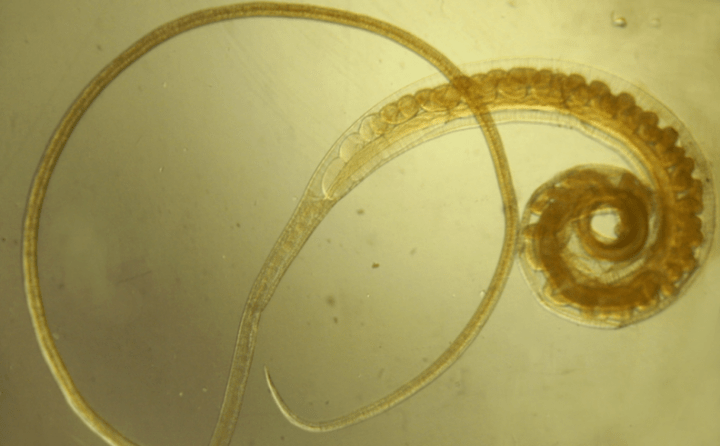
A distinguishing feature of whipworm disease is the almost complete absence of any signs of worm invasion. Possible symptoms include:
- Disorders of work of the nervous system (irritability, headache);
- Digestive problems with diarrhea, nausea, or vomiting;
- Elevated body temperature.
signs of other parasites
Among other types of worms that may appear in children, the following can be distinguished:
- Hymenolepiasis or Dwarf Rat Tapeworm. He has no specific symptoms. Its presence can be identified by nausea, loss of appetite, heartburn, diarrhea and constipation, headache, abdominal pain, increased salivation, dizziness, fatigue, rash, allergic rhinitis, and bronchospasm.
- Opisthorchiasis or Siberian fluke of cats. These worms in children can cause hypothermia, skin rashes, swollen lymph nodes, joint and right rib pain, pancreatitis, gastritis and other signs of digestive tract dysfunction, permanent catarrh syndrome, and more.
- Toxocariasis. Spread through animals. The main symptom is an allergic cough with choking and a rash characterized by intense itching.
- Wide Ribbon. The source of infection is not fried or boiled fish. Symptoms include abdominal pain, allergic reactions, vitamin B12 deficiency anemia, and other common signs of bowel disease.
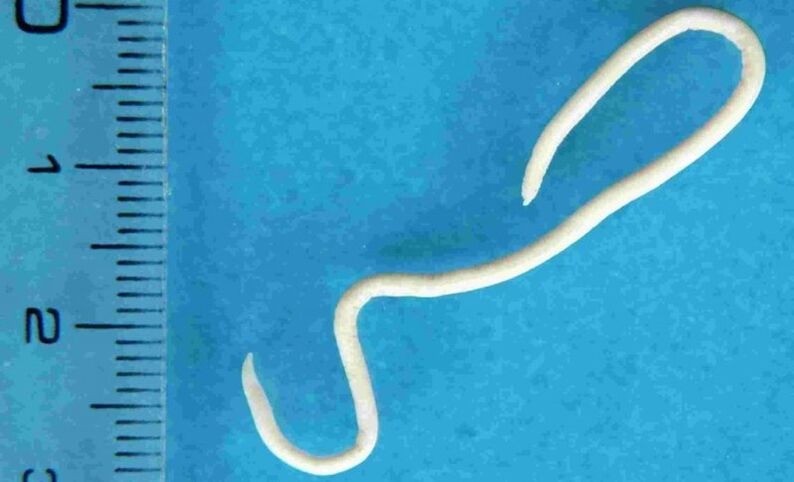
How to check your child for worms?
In most cases, it's difficult for parents to link specific symptoms to helminthiasis, or to understand why a child suddenly has vomiting or other symptoms for no apparent reason. If there is the slightest doubt about the presence of a worm, one should see a specialist and get tested, which makes it easy to check the hypothesis of a worm infestation. It won't take a lot of time and effort, but the cause of the baby's illness will be clear and can be treated in time.
self-diagnosis
Self-diagnosis is the careful monitoring of changes in a child's behavior, development, habits, routine, and normality—both physical and emotional.
This includes:
- Check feces regularly for worms;
- monitor the frequency of toilet visits;
- Check your skin for rashes, redness, or irritation;
- Check the amount of food eaten.
test
If worms are detected visually, or only when worm infestation is suspected, a medical diagnosis is necessary to confirm the diagnosis. To find out the cause of your symptoms, you will need a series of tests, including:
- Fecal analysis. In it, you can find parts of eggs or already mature worms. The effectiveness of the method is greatest during the period when there are already mature individuals in the gut, which is about 3 weeks to a month after infection. Feces should be collected in the morning and sent to the laboratory.
- Anal smear or scratch. To do this, use a dry cotton swab moistened with glycerin or tape. Through analysis, you can identify worm larvae that have deposited in the skin area of the anus.
- General blood analysis. Patients with helminthiasis in their blood may have an increased number of immune cells, a high erythrocyte sedimentation rate, and a low hemoglobin level.
- ELISA blood test. With staining enzymes that attract worms, viruses and other foreign bodies, you can spot parasites early.
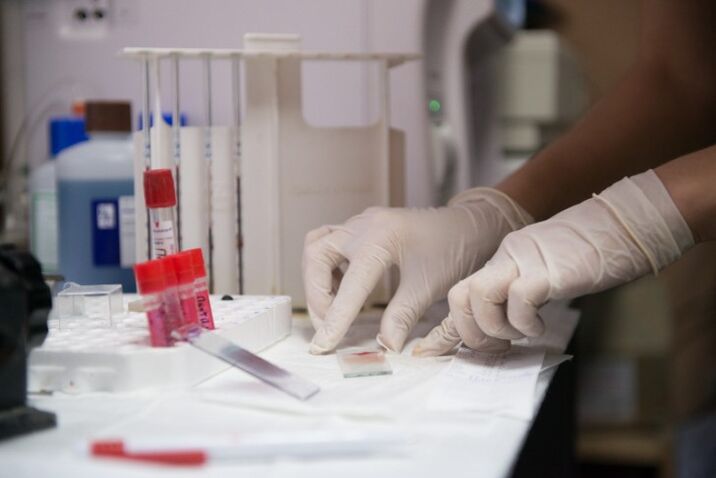
Additional tests for parasites in children that can be performed in an outpatient setting include:
- analysis for the presence of IgG antibodies;
- Ultrasound procedures;
- X-ray.
Features of drug therapy
After all required tests have been passed and an accurate diagnosis and type of worm has been determined, medication to combat parasites in children must be prescribed by a doctor. Among the most common antihelminthic drugs, attention should be paid to:
- An anthelmintic that acts on nematodes. Acceptance is allowed from 6 months. Effective against all types of roundworms, but not flat parasites.
- Benzimidazole anthelmintics. Served for 2-3 years. The dose is determined in a ratio of 10 mg per kilogram of body weight.
- Antiprotozoans and antibacterials from nitroimidazoles. Suitable for any age for which the daily dose is determined.
- Antihelminthic drugs of the benzimidazole class. Ascaris prevention for children over 2 years old.
What folk remedies can help?
In addition to medicines, worms can be treated with folk remedies.
The most popular products that can provide effective treatment for worms in children are:
- garlic. Successfully eradicate roundworms, tapeworms, pinworms and many other types of parasites. Suitable for children over 5 years old with a healthy stomach. 1 clove should be taken before meals, once a day. Can be taken with water or milk. Garlic is also an excellent antiviral agent.
- pumpkin seeds. They should be eaten on an empty stomach and raw. Usually children like this treatment. Otherwise, if the child is not allergic to honey, they can be crushed and mixed with honey.
- sage. Children over the age of 12 are permitted. To simplify reception, it should be mixed with a loaf of bread and salt.
- Fresh carrot juice. Once a day, drink half a glass on an empty stomach for 7-10 days. You can also nibble on raw carrots.
- Beet Juice. It is taken on an empty stomach. It is recommended to alternate with carrots to avoid stool discomfort.
- Walnut. A few tablets a day is enough for a child.
- a pineapple. Fresh rather than canned fruit is a delicious and effective remedy.
- Tangerine. In their "company" you can add sour berries and fruits.
prevention
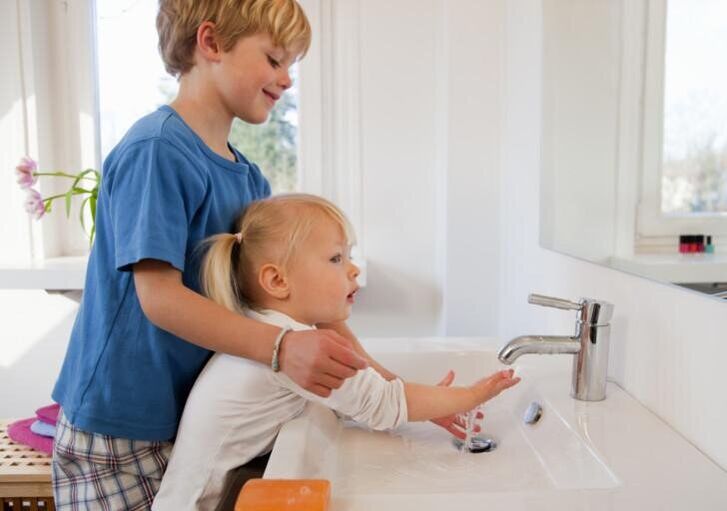
Regardless of the type of worm, prevention boils down to following basic rules of personal hygiene:
- washed food. All vegetables, fruits and berries should be washed before consumption. As an additional measure, the product can be soaked in boiling water.
- Clean your hands. They need to be washed before eating, after walking, after going to the hospital and after spending time in public places, after using the toilet and after playing with animals, even pets.
- Deworming pets. It must be done at least 2 times a year.
- Boiled or filtered drinking water. Drinking water from open-air reservoirs is prohibited. You should also avoid swimming in it to prevent splashes from getting into your mouth. Salt lakes and oceans are an exception.
- Regular prevention with the help of folk remedies.
- Take care of old and new toys. Plush toys should be cleaned regularly, and plastic and plastic toys should be cleaned with boiling water. The new one should be poured with boiling water before giving it to the child.
- No bugs! Flies, mosquitoes, and cockroaches carry worm eggs on their claws. It is important to prevent them from entering the house. For this you can use a fumigator, tape and special crayons.
- Eliminate fish and meat dishes that require low-roast animal products from your child's diet.
- Annual stool analysis. This process will help detect worms early.

















































